
by Templa Melnick | Mar 3, 2018 | Templa's Trivia
Have you ever been in a season of life where you really understood the phrase “hard pressed on every side” that Paul used in 2 Corinthians? Those words have sharply defined my life over the past several months. I’ve been like a grape in a wine press. Work, finances, health, family… it was all just… hard.
Here’s what Paul said,
2 Corinthians 4:7-9 New International Version (NIV)
7 But we have this treasure in jars of clay to show that this all-surpassing power is from God and not from us. 8 We are hard pressed on every side, but not crushed; perplexed, but not in despair; 9 persecuted, but not abandoned; struck down, but not destroyed.
It’s clear from this passage of scripture that God knows our human existence can sometimes be hard. Now, let’s be honest. Occasionally, hard life situations are the result of choices that we’ve made, and there’s a natural consequence. But sometimes, we heard God say, “Go.” So we went. And then… it’s harder than we thought it was going to be. Have you ever experienced this?
During this recent “very hard” season, I heard myself saying, “I am only plankton in this ocean.” Plankton was the smallest, weakest, most insignificant thing I could think of. The third time I realized I had said it, I thought, “What am I saying about myself?” Because I know that my words have power. What I agree with, gains authority in my life. Had I just agreed with a lie?
So I did what anyone would do. I googled it. My friend, Google, (via www.Dictionary.com) told me this:
Plankton is the aggregate of passively floating, drifting, or somewhat motile organisms occurring in a body of water, primarily comprising microscopic algae and protozoa.
Okay. Yep. That was what I felt like. Microscopic. Only somewhat motile.
But the pictures….. wow. The pictures that came up…. I’d never heard of bioluminescent plankton.

Bioluminescence is used to evade predators and acts as a defense mechanism in dinoflagellates. They produce light when they are disturbed or under pressure. (www.nationalgeographic.org/encyclopedia/bioluminescence)
My search also revealed that the group of chemicals involved in making plankton glow are called luciferins. Which means “bringing the light.”
Bio – life
Lumin – light
Right away, I thought of the passage of scripture in John 1. Jesus is light. Jesus is life.
John 1:1-5, 9-13 The Message version puts it this way:
Life-Light blazed out of the darkness;
the darkness couldn’t put it out.
The Life-Light was the real thing:
Every person entering Life
he brings into Light.
But whoever did want him,
who believed he was who he claimed
and would do what he said,
He made to be their true selves,
their child-of-God selves.
A few days later, someone at work said, “God must think a lot of you to put you in this position.”
I (somewhat jokingly) replied, “God must not remember who I am.”
Immediately, the Spirit of God spoke to my heart. “Oh, I know who you are. The question is, Do you know who I AM?”
Umm. Wow. I had to think about that. Do I know who God is? Do I believe that He is who He claims to be? Do I believe that He will do what He promises in His word? Or, had I – in all of the chaos of the current moments – forgotten this essential truth?
Messiah – Jesus Christ – came so that I could be restored to a right relationship with God. He came so that I – merely by accepting this incredible gift – could become my child-of-God self. I want that. So… my answer is… Yes. I do believe that Jesus is who He says He is. And… I want to be who Jesus says I am. For me to be able to reflect Messiah – the Glory of God – I have to KNOW who He is.
The first thing I was taught as a child in church was that God is love. That sounds nice. But, I’m not sure I really understand the unchanging, unrelenting ferocity that God loves us with. And that He pours out to us the moment we say yes to Messiah. When we say yes to Messiah, we begin to reflect His nature.
1 Corinthians 13 defines this God-inspired love. And reminds me that God’s very nature is love.
I’m not sure I was doing a great job of reflecting God’s nature. But, I want to. I want to understand who God is, and I know that only then can I understand who I am.
God used the tiniest sea creature, plankton, to guide me into a deeper understanding of Who He is.
Here are a few facts about plankton:
- Plankton doesn’t sink.
- Plankton floats on the waves.
- Plankton nourishes others. In fact, all other living things in the ocean depend on the oxygen that plankton releases.
- 80 % of the earth’s oxygen is produced by plankton.
- When large groups of plankton form together, it changes the composition of the ocean.
I began to put 1 Corinthians 13 from the Message version together with the attributes of plankton.
Plankton doesn’t sink. My Child-of-God self – Plankton – trusts God. Always. Never looks back, but keeps going to the end. This is not done in my own strength, and not from “performance.” But instead, is accomplished by floating on God’s love. Trusting God. Trusting that God loves me.
Plankton floats on the waves. My Child-of-God self is still, and KNOWS God. My Child-of-God self is buoyed by God’s love even in the midst of giant waves and violent storms. God is love. God is good. God is bigger than any problem in my life. Bigger than any political issues. Bigger than hurricanes. Bigger than famine. God is bigger.
Plankton nourishes others. My Child-of-God self cares more for others than for itself, doesn’t want what it doesn’t have, isn’t always me first, doesn’t fly off the handle, puts up with anything.
Plankton sticks together. My Child-of-God self takes pleasure in the flowering of truth, bears one another’s burdens, encourages others, is patient, kind and dependable. I was reminded of a scene in the movie of Apollo 13, where astronaut Jim Lovell describes being guided safely back home in the Sea of Japan by the glow of bioluminescent plankton. One plankton alone couldn’t have done that. But a group, bonded together in unity? The life-light of those microscopic plankton changed a completely dark ocean into a beacon of hope.
Suddenly…. The pressure was off. I was freed from the “what ifs” and the “you’re not enough” thoughts that had been bombarding me. As I pondered the attributes of plankton, I realized that God’s love for me is not dependent on my own efforts. His loving-kindness towards me is absolute. Simply because I said yes to His gift of Jesus as my Life-Light and accepted His access into the arms of a loving God.
There will be other storms. And I will always be very small in this giant ocean of life. But I am not insignificant. I am loved by the Great I AM.
I choose to be like plankton, to float on top the crested waves, secure in the love of my Heavenly Father. I am still learning how to be who Jesus says I am. Loved, and able to love. Accepted, and accepting of others. Courageous, and able to encourage others. This is my true self, my Child-of-God self. This is plankton.



by Templa Melnick | Nov 5, 2014 | Templa's Trivia
Just to let you all know….
This week, my book, Season of Forgiveness is featured on these review sites. I know they’d love to have you drop by and read their reviews… And, if you feel like it, maybe leave a comment or two.
I’m very happy to be a part of the Cladach Publishing family, and to be able to participate in their annual Fall Fling!

http://achristianbookwormreview.blogspot.com/2014/11/season-of-forgiveness-by-templa-melnick.html
http://asimplelifereally.blogspot.com/2014/11/review-season-of-forgiveness-bytempla.html
http://lyonslady.blogspot.com/p/books.html
http:reviewsfromtheheart.blogspot.com/2014/11/season-of-forgiveness
http://jendisjournal.com/2014/11/04/season-of-forgiveness/
And just so you know, I did NOT pay any of these people to say nice things about my book. (And neither did my publisher!) So thank you, thank you, thank you… I am very glad you’re enjoying my story.
I am working hard on the second book and hope to share it with all of you SOON!
Blessings!
Templa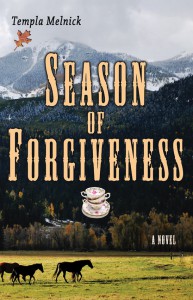
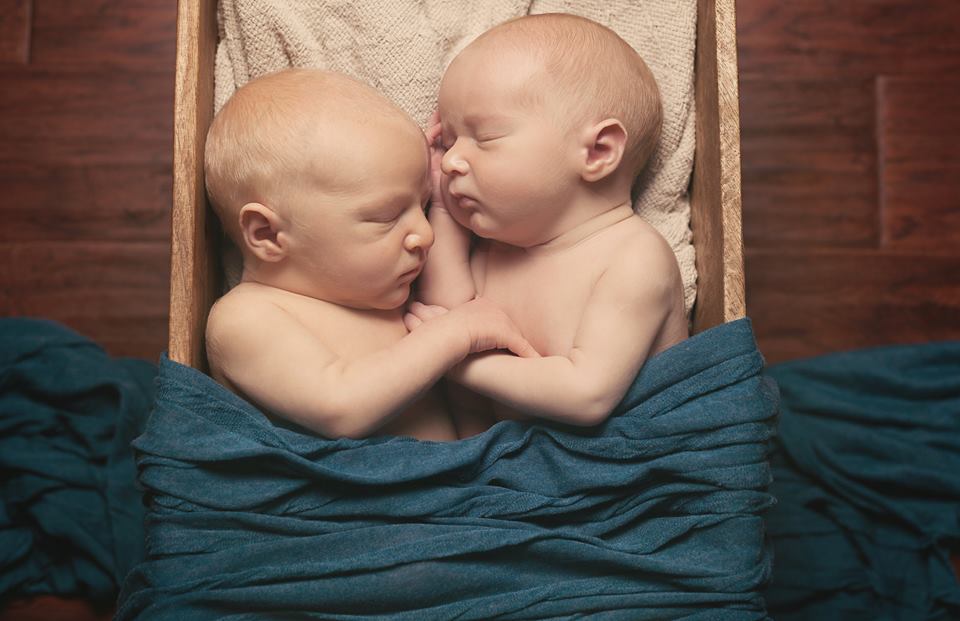
by Templa Melnick | Nov 3, 2014 | Colorado history, Templa's Trivia
My first grand babies entered the world a few weeks ago, in a hospital hundreds of miles away from this grandmother. And, within minutes of their arrival I had pictures of their sweet little faces on my smart phone via a text from my son. A few hours later, friends and family – and a bunch of people I don’t know, were ooohing and aaahing over these precious little ones as they made their debut on Facebook and Instagram.
And the funny thing is… I took this immediate exchange of information for granted. As though I’ve always had this technology at my fingertips, when in fact, I was a latecomer to the technoparty.
There have been vast changes to the way we communicate over the past decade or two. Smart phones have replaced cell phones, which replaced pagers, (I know, some of you just said, “What’s a pager?”) which brought a whole new level of “instant availability” to the world.
Before that, our phones were stationary devices that were hooked to a wall with a curly cord. If you wanted to drive your mother crazy, all you had to do was empty a box of birdseed onto the floor juuuuuust beyond the limits of that stretchy – but limited cord. (One of my earliest childhood memories right there. And, alas, when my mom hung UP the phone, she reached me just fine. Something my three- year- old reasoning had failed to take into consideration!)
A few decades ago, if you weren’t home when the phone rang, that was it. You missed the call. There were no voicemails, no caller ID, no text messages.
And does anyone remember the “party line?” In rural areas, or to save a few bucks on the monthly bill, you could share a line with several other families. So, you’d listen for your family’s distinct ring before you answered. And if you were the gossipy type, you might listen in on other people’s conversations.
The first long distance telephone call was made May 8th, 1910 from Denver, Colorado to New York City, New York. According to the Museum of Western Colorado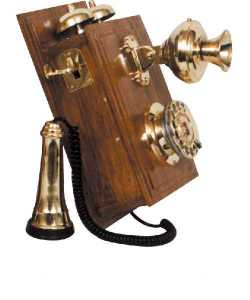 , the first telephone lines reached Fruita, Colorado around 1900. But, it would be another twenty or thirty years before the majority of western slope households had their own telephone.
, the first telephone lines reached Fruita, Colorado around 1900. But, it would be another twenty or thirty years before the majority of western slope households had their own telephone.
I knew a woman who worked for the telephone company back in the 1940’s and 1950’s here on the western slope of Colorado. Her first job out of high school was as the operator who physically connected each incoming call. (Remember the TV show Andy Griffith, and the operator named Sarah that was always on the line when they picked up the phone? Yeah, it was really like that.) There was a certain young man that she was interested in. Whenever he would ask to speak to another young woman in their little community, she’d “accidentally” drop the connection or connect him to the wrong number. When I met her, they’d been married for over fifty years. They still laughed about how she had kept the competition away.
I love my smart phone. I really do. But, I was checking my email while waiting in line at the grocery store when I realized that the line separating work from the rest of my life has gotten really, really fuzzy. And the constant flow of cyber chatter can be overwhelming. I find myself longing for “the good old days” when people had an office phone and a house phone. Period. And email was an office thing.
Then I take it a step further, and think about the days before telephones at all. Hmmm. That might be nice. No pesky political calls or pushy sales people, no interrupting of family time. No blurring of the lines between work and the rest of my life. It seems so peaceful… so quiet.
But wait. I wouldn’t have those first, sweet glimpses of my grandbabies. And I wouldn’t have received the call that set my heart at ease, “They’re here. Mom and babies are doing great.” And we wouldn’t have had the answers at our fingertips for all of those new baby questions… Is this normal? What do you do when…? (Wow. I wish we’d had the internet when MY babies were born!) And I wouldn’t have been able to share the joyous news with all of MY friends and family.
So, here it is: I have a love/hate relationship with my smart phone. Technology is my friend. And my enemy. I love feeling connected to friends and loved ones with a simple scroll through social media sites. I love having instant access to reliable directions when I’m in a strange city. And at the same time, I hate the interruptions that pull me away from my time with the people I love. I dislike the distraction and the constant chatter I subject myself to via social media, and the stress of never really leaving work at work. There’s a balance in there somewhere… I just haven’t found it yet.
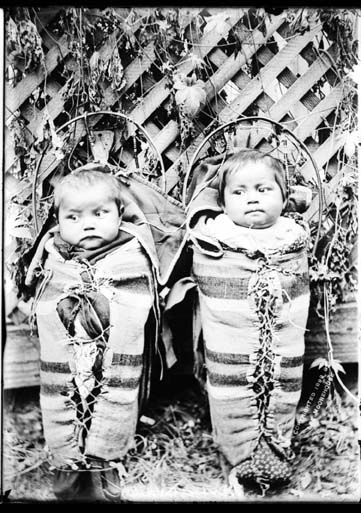
by Templa Melnick | Aug 27, 2014 | Templa's Trivia
“Working mothers” have existed since the day Eve started this whole shindig. It’s impossible to have children – especially babies – without an exponential increase in the daily work load. And regardless of how sophisticated our society has become, much of the increased work load falls on the moms. With a few notable exceptions, the woman of the house usually does the grocery shopping, packs lunches, does the laundry, takes the dog to the vet, makes sure the kids do homework and brush their teeth, and all the other piddly little things that need to be done to keep the modern family afloat. When a little one has a tummy ache or an ear ache, or the night-before-first-day-of-school jitters, one person seems to be bellowed at from the recesses of the dark hallway. And her name is “Mommy.”
Scientific studies have concluded (and generated a lot of controversy, I should add) that men’s and women’s brains are wired differently. Well, yeah. Unless you’ve lived in a secluded bio-dome or under a rock, you’ve probably suspected as much. Aside from the obvious “if we were all the same, it would be boring”, there is good reason for men and women to function differently. I didn’t say one was better than the other. I believe we are designed to complement each other.
In the past, men’s roles were to protect and to provide for the family group (deterring attacks from dangerous animals or warring tribes, hunting, trading… all that good stuff.) Women often stayed a little closer to the home dwelling, and in addition to many other crucial tasks, traditionally had the care and feeding of children as a primary responsibility. Again…Well, yeah. Women are biologically equipped to feed babies. Men (as any father of a nursing baby can tell you) are in over their heads when the youngest member of the family gets hungry.
So, scientific data that suggests women are designed to “multitask” really shouldn’t surprise us. (Side note: The term “multitasking” originated in the computer engineering industry. It refers to the ability of a microprocessor to process several tasks simultaneously. The first published use of the word “multitask” appeared in an IBM paper describing the capabilities of the IBM System/360 in 1965.)
Native American Indian women created functional and often beautiful carriers for their babies. These enabled them to take their babies with them while performing daily tasks such as scraping skins from the hunt, gathering berries and healing herbs, and cooking. Multitasking. It’s not a new concept, just a fancy word that describes what women have been doing since the very beginning. Have you seen the National Geographic photos of beautiful African women with baskets on their heads and children in tow? How about the Vietnamese women in rice paddies with children on their backs? Through the years, women have come up with inventive ways to do several things at once. Why? Things had to be done!

TwinGo Carrier
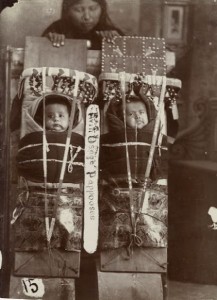
Osage Twins circa 1900
Have you seen the modern upgrades to the old-fashioned baby boards? These savvy moms and dads are using a centuries old concept to keep their babies close and still have hands free for important daily tasks like cooking dinner and shopping. (This mom of triplets is amazing. Wow. Just wow.)
In my research for Season of Forgiveness, I came across a very clever invention from the early 1900’s. It was a wringer washing machine with a cradle built onto the top of the wringer. As the lady of the house turned the crank to wring the water out of the clothes, it rocked the baby. (Alas, I did not get a picture.) Multitasking. Or, in the terminology of the day, survival.
Since my daughters-in-law (yes, that’s plural) are expecting and will be expanding our family soon, I’ve been thinking about all of the challenges and changes that come with babies. And so have they! They’ve read the latest books and blogs on parenting, busily prepared nurseries, and stocked up on diapers. The truth is, regardless of how prepared you are, and how much you want to be a parent, sometimes… it’s just hard. Especially those first few months. Anybody who tells you differently is lying. But…
If you keep it all in perspective (and here, I’m talking about perspective during the midnight meltdowns that most new parents experience at least once), I’m pretty sure some things are better now versus a hundred years ago. Disposable diapers, baby food in jars, washing machines that you don’t have to turn by hand, (and electricity in general!) not to mention ultrasounds, NICU, and all of the medical miracles we have today.
But by far the most important change, the MEN who have stepped up to take a more active role in parenting. Thanks daddies. Thank you for all of those late night diaper changes, the bedtime stories that only you do the right voices for, the horsey rides, and for all of the dozens of little things you do to keep the family rolling. Your kids will be better people because of you. Your wife will love you for it – and if she doesn’t, she should. And you, daddies, will have the joy of being a part of your children’s lives from the very beginning.
So, new moms: take courage! Women have been successfully mothering babies for eons. (Okay, not all of them did a great job – but you will.) Yes, it will be challenging. And even though you may be called upon to juggle corporate conferences and breastfeeding, or maneuver rush hour traffic with wailing twins in the backseat, you won’t have to strap the babies to your back while scraping a buffalo hide nor will you be required to rock the baby while squeezing dirty wash water out of your husband’s drawers. And another important change from a hundred years ago: your husbands know how to do laundry. Trust me. They do know how. But you might push your fancy sweaters to the back of the closet… at least for a little while .
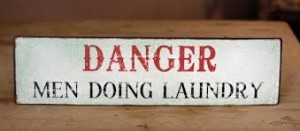
Men Doing Laundry
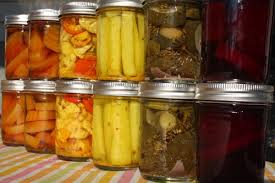
by Templa Melnick | Aug 13, 2014 | Templa's Trivia
Fermented Foods in the Old West
The health benefits of fermented foods are being touted everywhere these days. And, yes. I’m on the fermented foods bandwagon, too. As I write this, I have a glass of home-brewed kombucha sitting next to me. (What’s kombucha, you ask? Kombucha is an “ancient fermented tea beverage” that has a natural effervescence (like bubbly carbonation) that is full of probiotics, antioxidants, B vitamins and so much more.)
So, what’s all the hype? Fermented foods are good for the gut, aid digestion, increase the nutrient value of many foods, and … have been a reliable way to preserve food for centuries. Fermented foods are certainly not a new concept. Virtually all civilizations have had fermented foods as a part of their diet and culture. And not all fermented foods have their origins in other countries.
According to researchers at the Weston A Price Foundation, most of the Native American Indian tribes had at least one fermented food specialty.
The Cherokee “bread” consisted of nixtamal wrapped in corn leaves and allowed to ferment for two weeks. Before you turn your nose up at this, you should be aware that this process increases the nutrient absorption, makes the corn easier to digest … and is similar to the process for masa that is used to create the ultimate comfort food – tamales. Mmmm.

Nixtamal
English explorer, fur trader, naturalist and author Samuel Hearne describes a fermented dish consumed by the Chippewaya and Cree: “The most remarkable dish among them. . . is blood mixed with the half-digested food which is found in the caribou’s stomach, and boiled up with a sufficient quantity of water to make it of the consistence of pease-pottage. Some fat and scraps of tender flesh are also shred small and boiled with it. To render this dish more palatable, they have a method of mixing the blood with the contents of the stomach in the paunch itself, and hanging it up in the heat and smoke of the fire for several days; which puts the whole mass into a state of fermentation, which gives it such an agreeable acid taste, that were it not for prejudice, it might be eaten by those who have the nicest palates.” (Um, if you say so. But then again, salami is a fermented meat. And I haven’t ever turned my nose up at salami.)

Fermented meat
In the Southwest, a drink called chichi was made with little balls of corn dough which the women chewed and added to water to produce a delicious, sour, fizzy fermented drink. (Sounds a little like kombucha – but instead of scoby, it has saliva as the fermentation catalyst. Ick.)
I’m not going to lie. The thought of those ladies sitting around, pre-chewing corn dough to make chichi makes me shudder. I appreciate the effort. I really do. I’m just not sure I’d be able to drink it. Ever. Even if it is tasty and good for me. Although, just looking at the kombucha scoby made me shudder at first too.
Homesteaders and settlers brought their own versions of fermented foods along with them when they arrived in western Colorado. Cabbage was turned into sauerkraut and enjoyed throughout the cold winter months, adding much needed nutrients and healthy probiotics to their diets. Have you ever noticed how many different recipes there are for pickles? Pickling was a reliable way to preserve food before refrigeration was available. Along with the preservation of the food itself, pickling can provide numerous healthy side benefits. From the vinegar used to make pickles, to sourdough bread, yogurt, salami, and cheese; these fermented old friends are worthy of a little applause.

Pickles
According to experts, pickles alone – the non-heat processed variety – could help us live a healthier, happier life. And they tell me fermented foods can provide us with a healthier gut, possible help controlling weight gain and appetite, decreased allergy symptoms, inflammation relief, protection against microbial infections, improved pediatric health and development, possible cancer risk reduction, improved mental health, as well as better absorption of nutrients.
I’ll raise my glass of kombucha to that. Cheers.


















